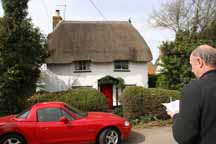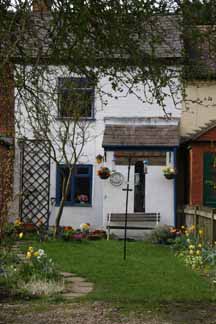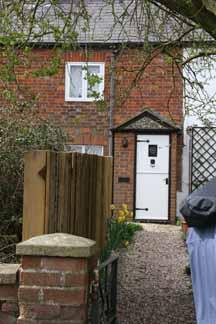
|
PART OF THE HS2 HISTORIC IMPACT ASSESSMENT PROJECT Twyford's old cottages were included in the society's
Following the Twyford Research Day on 2 April 2011, the results of the village buildings survey were collated with documentary research into the history of the village as a whole. Twyford appears in Domesday Book (1086), when its population of 34 families included nine slaves. Its name means ‘two fords’ – referring to the two stream crossings at what is now Twyford Mill. Aerial photographs show that the village is surrounded by the remains of both medieval ‘ridge and furrow’ open fields and earthworks that indicate the trackways and house platforms of now-deserted sections of the medieval village. None of this has yet been archaeologically investigated. In the 14th century Twyford was a wealthy village, paying more tax than the county town of Buckingham. But it was also very unequal. In 1522 the lord of the manor, Thomas Giffard, held land bringing in £69 a year. Joanna Giffard, a widow and probably Thomas' mother, had annual income of just over £33 a year. Only three of the 58 other householders held any land at all. All this makes Twyford a significant village in the history of the county – an important heritage asset. THE REPORT The society's Historic Environment Appraisal of Twyford (download from the link below) recommends that the village is of sufficient special architectural, historic and archaeolological interest to justify the designation of a conservation area to include the medieval earthworks, the church, churchyard, St Mary's House and much of the village core. It proposes further historical research and survey work to achieve this end. The report concludes that ‘The impact of HS2, as currently proposed, would be greatest on the most historically and archaeologically significant part of Twyford village, that is the site of the ancient church and medieval manorial complex.’ The proposed line, raised on a concrete viaduct with overhead gantries exaggerating the height of the structure, would cause significant damage to this historic setting, both by construction work and through long-term visual and noise intrusion. For full details and recommendations, see: PHOTOS BY PETER MARSDEN.
|
|




